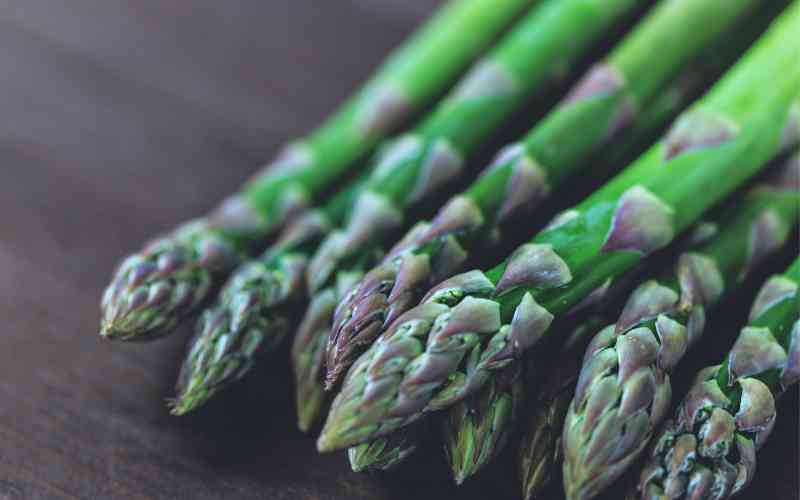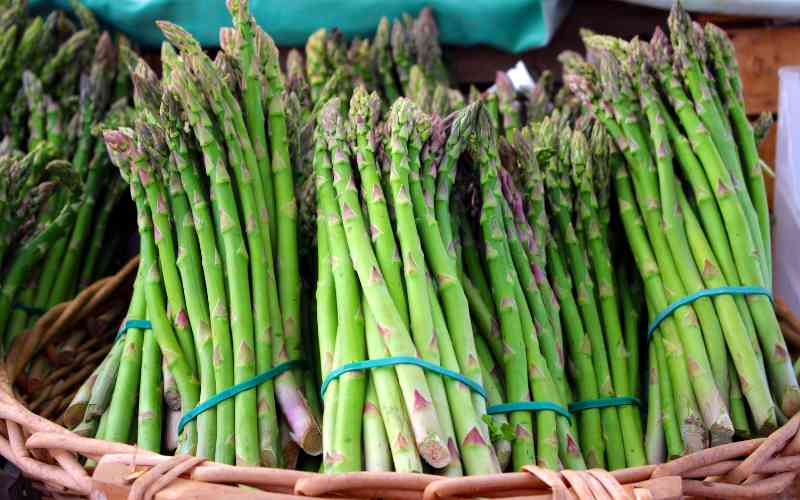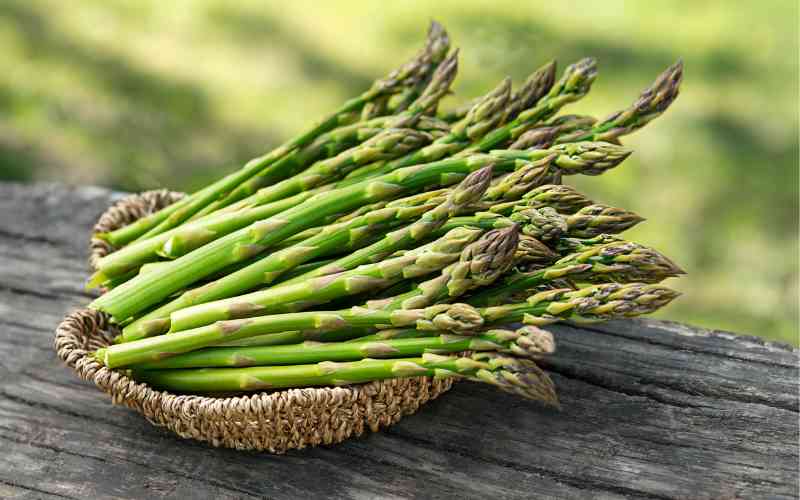If you’ve ever wondered, “What does asparagus taste like?” you’re not alone. Its appearance is enough to put you off. Even though it’s a well-known vegetable around the world, not everyone enjoys the taste.
Asparagus is that one veggie we hated as kids but loved as adults. It is a superfood with a unique taste, and it’s likely to change entirely depending on how you prepare it.
Here, in this article, we’ll give you a detailed description of the asparagus taste and other fascinating facts you might not know about asparagus.
Contents
What You Need To Know About Asparagus?

Asparagus is a green vegetable that comes from genus of plants. It is well known for its slender spears, which are one of the first signs of spring. It is among the tastiest and most highly prized of all vegetables in the garden.
Asparagus was first grown in Greece. Experts say ancient Romans savored it, even Emperor Augustus, at the height of asparagus’s popularity, had a ship built specifically for transporting this vegetable.
Its Growth can be seen in agricultural fields in the spring. Unlike other vegetables, Asparagus can be harvested at least three years old before it can be eaten.
What Does Asparagus Taste Like?
The taste of asparagus will depend on how it is been harvested, how you prepare it, the type of asparagus, and what you serve with it. However, each type of asparagus has a distinct flavor.
Asparagus undoubtedly has a mild, earthly grass taste with somewhat bitter undertones. Its earthy grass flavor is similar to that of broccoli.
There’s a good reason this is a popular choice for a meal. Asparagus’s savory flavor comes from its rich, nutty flavor. However, if the spears are particularly old, they may have a mild vinegar-like flavor, while the young can have a milder taste.
It has a crunchy texture that makes it easy to separate the individual pieces. It takes on a much more delicious flavor when seasoned with lemon juice or olive oil. Raw asparagus has a slightly crunchy and oak-like flavor that can be enjoyed.
A crispness to the asparagus lends it a crunchy texture. Asparagus becomes tender when cooked. Aside from that, the texture of older asparagus is greasier.
Read Also: What does flounder taste like? (5 Different Tastes)
A Closer Look at Asparagus’s Unmistakable Flavor
Asparagus has a unique flavor that can be described in various ways by different people. When it comes to asparagus, there is one thing that can be said with certainty: it has a robust flavor.
It’s not uncommon for people to compare the flavor of this versatile veggie to that of mushrooms. Some people, on the other hand, compare it to broccoli. After baking and seasoning with lemon juice or olive oil, it takes on a flavor reminiscent of beans.
Compared to broccoli, green beans, and artichokes, the taste of green asparagus is reminiscent. Asparagus spears, unlike most other vegetables, become more flavorful as they grow in size.
The flavor of green beans is often compared to that of asparagus by non-vegetarians. The risquéness of beans, on the other hand, is much lower than that of asparagus.
Asparagus can be a difficult vegetable to cook because of the wide range of flavors that can be added to it. It easily absorbs the flavors of other ingredients while it’s being prepared.
However, when combined with garlic and other standout vegetables like mushrooms, it produces a mouthwatering grilled meat flavor.
Many dishes call for the addition of asparagus to the ingredients list. These include eggs, salad, soup, and even grilled meats and seafood. As a seasoning for various meat and fish dishes, this vegetable is frequently used in culinary art.
Many people enjoy asparagus as an appetizer because it is a healthy alternative to sweets and carbohydrates. Braising, grilling, or frying asparagus is a great way to bring out its distinct flavor, which contributes greatly to the overall flavor of a dish.
Even if you don’t intend to eat this nutritious vegetable for its health-enhancing properties, at least take a moment to savor the thought of its unique flavor. This crunchy vegetable packs a lot of nutrition.
Read Also: How To Neutralize Sweetness In Sauce (8 Quick Fixes)
How Do You Store Asparagus?

When it comes to keeping your asparagus fresh, many people prefer to store it in a jar and cover it with a plastic bag. Consequently, it can be stored in the refrigerator for between five and ten days. The stalks begin to dry out if left unattended for an extended period of time.
Asparagus can also be stored in the freezer for future use. Farmers typically harvest asparagus in the spring, but they need a considerable amount of patience because it takes three years before you can harvest.
When storing asparagus, always store it with the woody end down or trim the bottoms and stand the spears up. Then, using a moist paper towel, wrap the base of each stalk, and place it in the refrigerator.
It will quickly lose its crisp texture and become a mushy mass if you leave it out on the counter.
Read Also: Does Lemongrass Taste Like Lemon?
Frequently Asked Questions
How does one describe the taste of asparagus?
It has an earthy, slightly sour flavor, asparagus shares many similarities with broccoli in terms of taste. If you’re looking for an unusual flavor, you may want to try some aged asparagus.
Is the taste of green and white asparagus different?
In terms of flavor, white and green asparagus are very distinct from each other. The white spears’ flavor is more subdued, earthier, and hearty when compared to the green spears’.
Conclusion
If you haven’t tried asparagus yet, head to the store and get some. It’s hard to go wrong with asparagus because of its delicious flavor and myriad health benefits.
Asparagus can be eaten raw or cooked. It can be used in various ways and could play a significant role in the meals you prepare that are high in nutrition.
Our goal in this article was to describe asparagus’s unique flavor and answer the question, “What does asparagus taste like?” as well as explain how to store them
Thank you for spending your time reading this article
